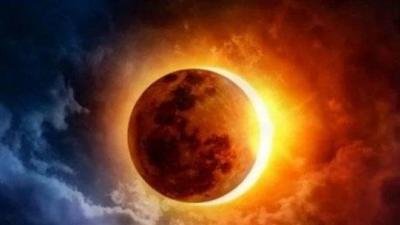On Tuesday, October 25, residents of Earth will witness a partial solar eclipse that will be visible from parts of Europe, Western Asia, and Northeast Africa. Although skywatchers in other parts of the world, such as the United States, may not be able to view this event live, they can watch it online for free. The partial solar eclipse will begin at 08:58 GMT when the moon passes in front of the sun and will end around 13:01 GMT. The Virtual Telescope Project 2.0 will allow astronomy enthusiasts to watch the final partial solar eclipse of 2022 from their homes (or offices), as the eclipse will be filmed from Rome, Italy, and streamed online for free. The mobile monitoring team from Time and Date will provide live coverage of the partial eclipse, and the broadcast will be available on their YouTube channel.
A solar eclipse occurs when the moon slips between the Earth and the sun, casting its shadow on the planet and blocking sunlight either partially or completely. This partial eclipse is the second partial eclipse of 2022, following the eclipse on April 30, which swept across the sky of the Southeast Pacific and South America. Partial solar eclipses, as well as total solar eclipses, are not visible from all parts of the Earth. This is because the moon is much smaller than the Earth, and its shadow is only a few hundred miles wide, meaning it can only fall on a portion of the planet's surface at any one time. The maximum coverage of the sun's disk on October 25 will be 82% at a location called the "central eclipse point." This is where an imaginary line connecting the center of the sun to the center of the moon intersects our planet's surface. During the eclipse, the central eclipse point will be in the Arctic. The maximum obscuration will reach 82% in Russia, while this dark region will decrease to 70% in China, 63% in Norway, 62% in Finland, and London will see only a 15% eclipse. The entire event will last just over four hours. This will not be a total solar eclipse anywhere in the world, as during the event, the moon and sun will not be perfectly aligned, meaning there will be no location on Earth where the moon completely covers the sun. Skywatchers who miss the chance to view the partial solar eclipse either live or online may have a better opportunity on April 20, 2023, when a total solar eclipse will occur.




